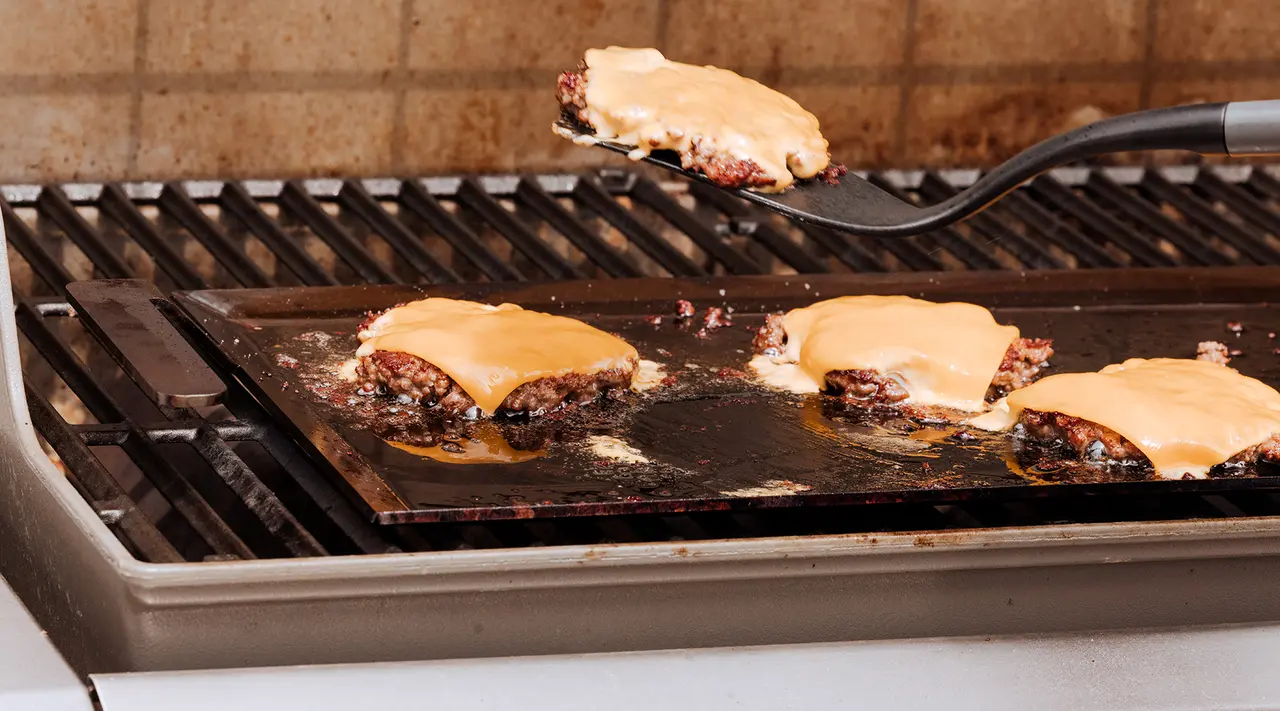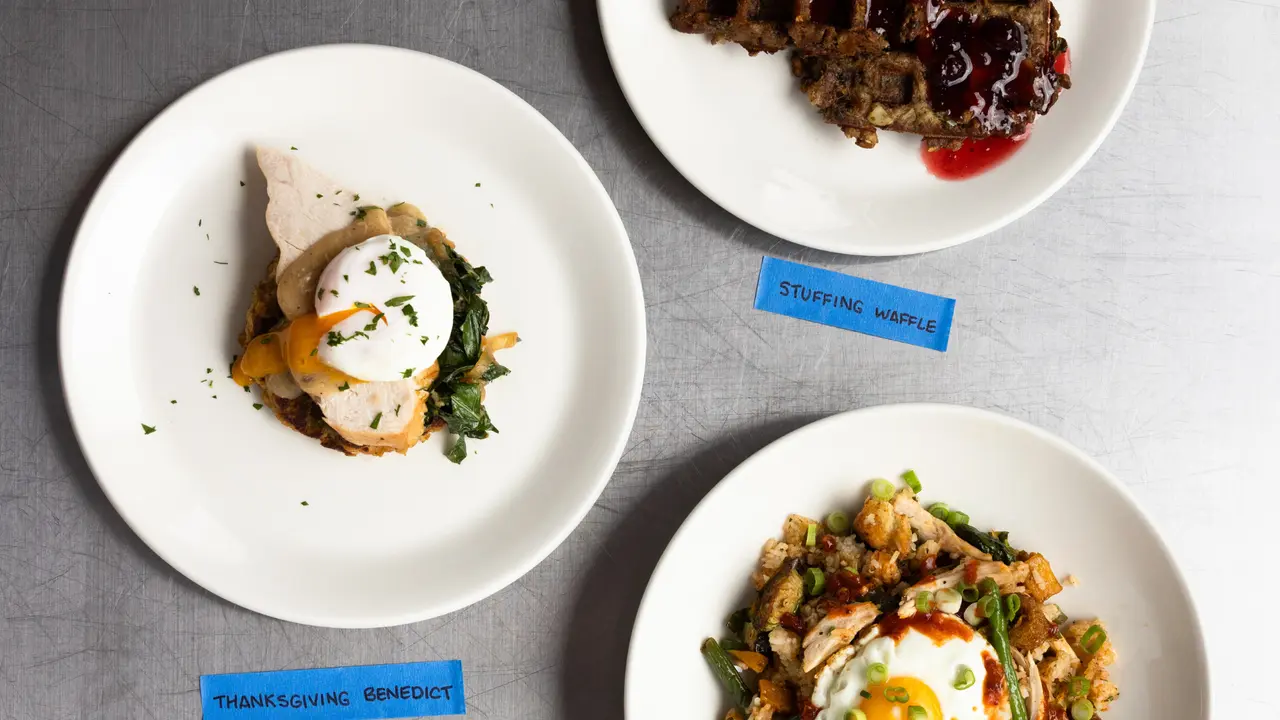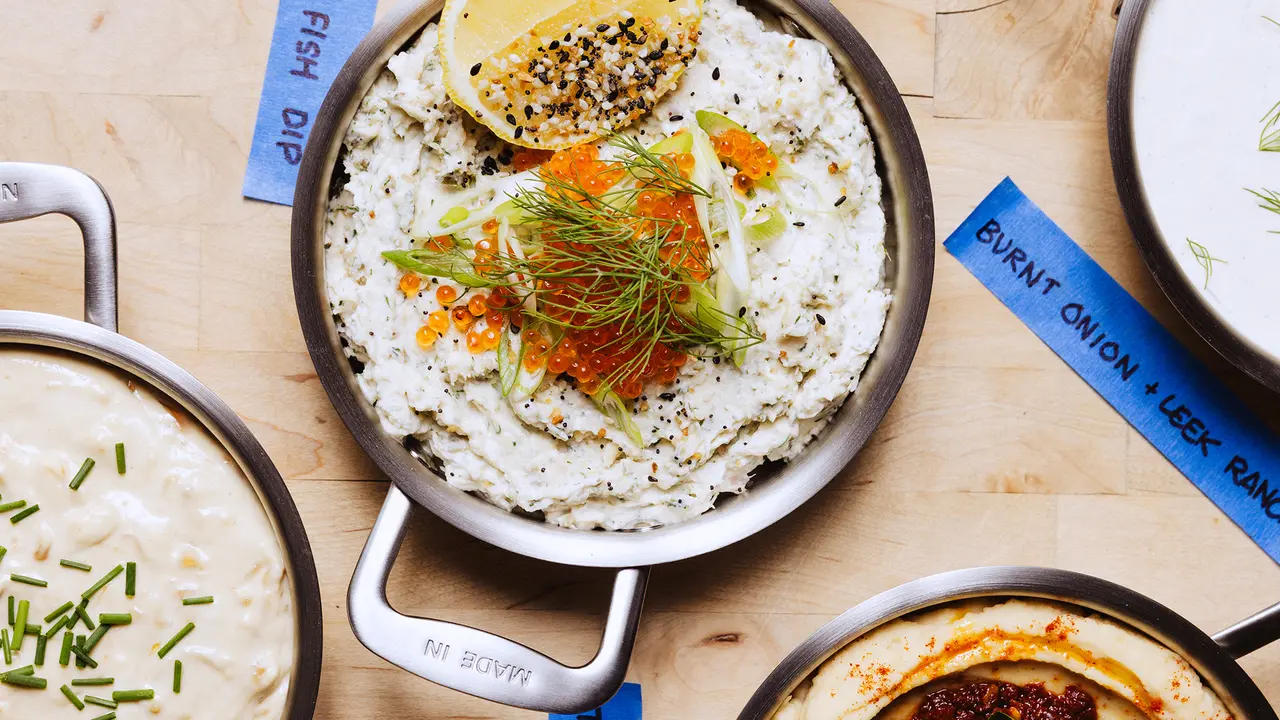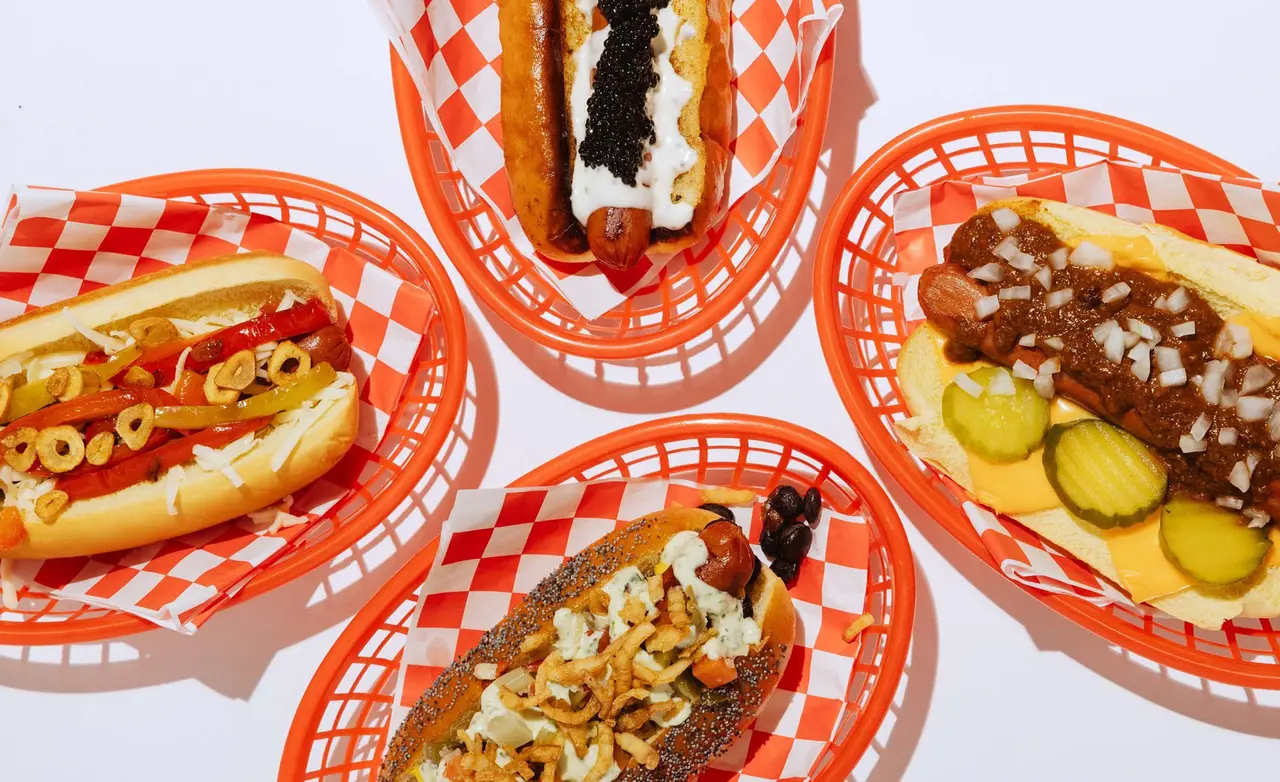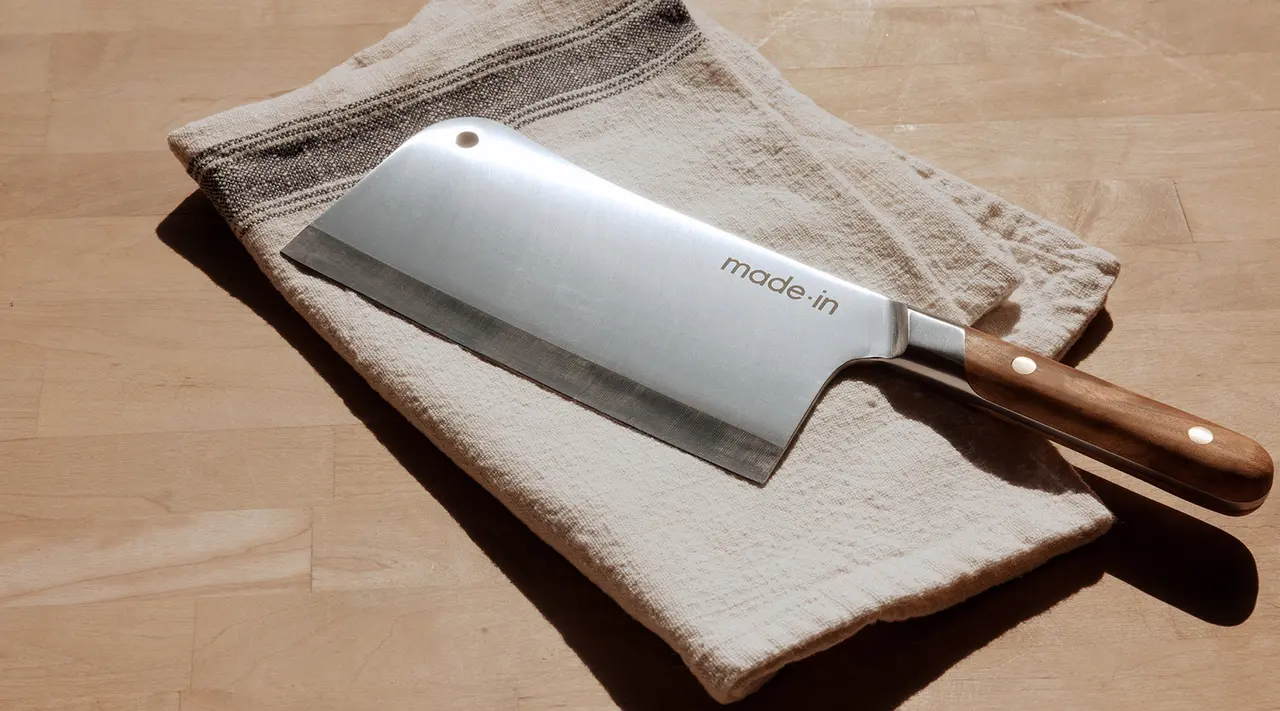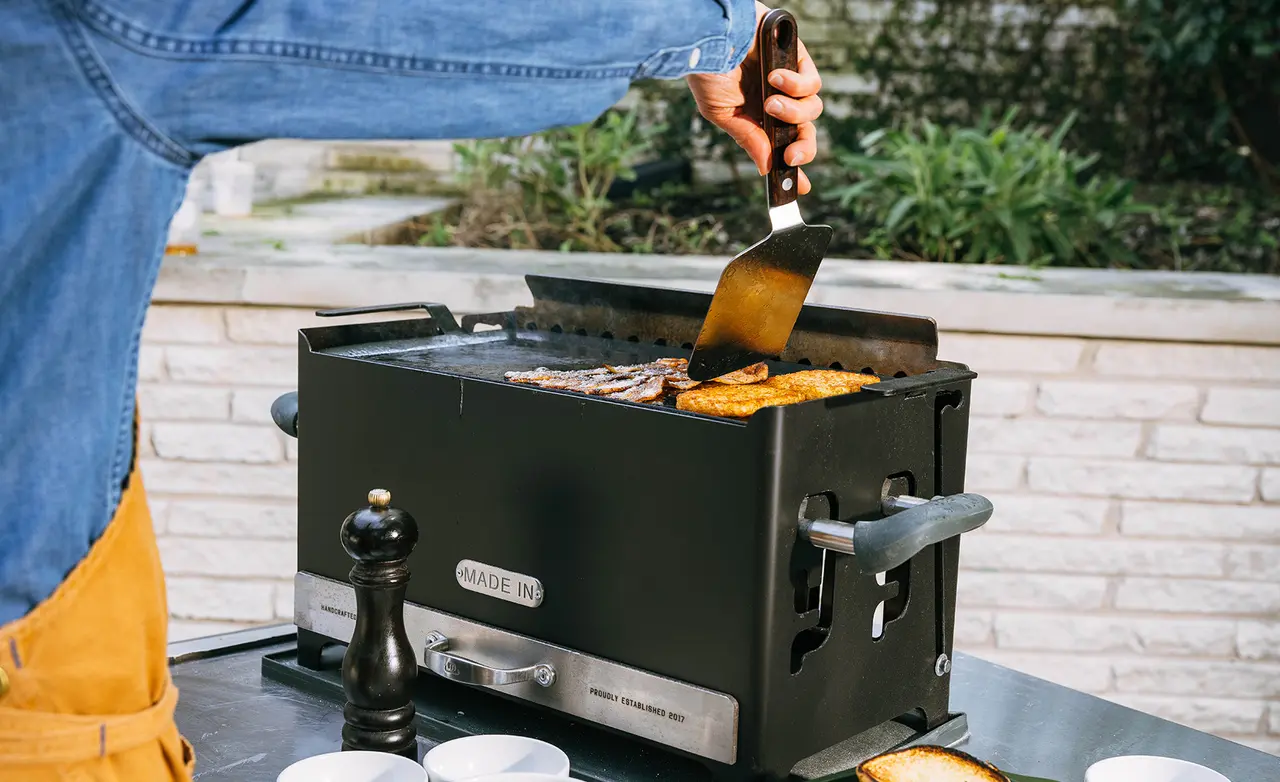Because burgers are relatively easy to make, they often don’t receive the attention they deserve during the cooking process. Unfortunately, this often leads to a surfeit of subpar burgers that are either underseasoned, underseared, and/or underwhelming in general.
For best results, we’re partial to cooking smash burgers on our Carbon Steel Griddle —bonus points if you accompany it with the Stainless Steel Grill Press—but below we’re sharing some tips that’ll take your burgers to new heights.
Regardless of where you fall on the smash vs. pub-style burger debate, if you have a griddle, you can cook them just about anywhere and they'll come out perfectly.
How to Cook Smash Burgers on the Griddle
Smash burgers are not only delicious and perfect for those who prefer thinner patties to thicker ones, but they also come together incredibly quickly. Here’s how to get a lacy-edged, crispy patty on your bun in less than 10 minutes.
- One of the best things about smash burgers is there’s no need to preshape the patties—simply form loose balls of ground chuck or your burger blend of choice. Don’t worry about imperfectly shaped patties—those edges will become extra crispy and browned during cooking.
- Preheat your Griddle (on the grill or stovetop) and apply a light layer of oil as it heats.
- One the Griddle is thoroughly heated, place the patties on the cooking surface. Make sure to leave sufficient space between patties to account for post-smash spread.
- Oil your Grill Press and use it to smash the patties into discs between ¼” and ½”-thick.
- Once sufficiently smashed, season the patties generously with salt, cover (if cooking on a grill), and cook for 2 minutes, until edges are brown and juices start to accumulate on top.
- Flip them with a large heatproof spatula and season lightly with salt. Do not smash them again on the opposite side. Cook for about 1 minute more.
- For cheeseburgers, place a slice of cheese on top of each patty, cover, and cook until the cheese starts to melt, approximately 1–2 minutes more. At this point, burgers should be about medium and ready to serve.
How to Know When Your Burger Is Done
All told, making a smash burger should take only around 3-5 minutes, not including the time it takes to preheat the grill or stovetop. Because they’re so thin and cooked at a relatively high temperature on an incredibly conductive heat source, the cooking process is much faster than if you were grilling, cooking on the stove, or using an indoor electric grill marketed by a certain former professional boxer.
However, there are a few other ways to know when your burger is done. For extra accuracy, run a few of them rather than just relying on one.
Thermometer
The easiest and most surefire way to know your burger is done is by temping it.
- From 120-125F, it’s rare.
- Medium-rare spans 130-135F
- Medium-well is about 150-155F
- 160-165F is considered well done.
Generally, we aim for a medium burger for food safety reasons—but you do you.
The Press Test
Using a spatula or your grill press, apply pressure to the patty. If the juices run clear, you’re good to go. This won’t necessarily provide the full picture of how done your burger actually is, but it will demonstrate generally whether you’ve cooked your burgers enough for safe consumption.
The Test Burger
Sometimes visual and tactile cues won’t be enough—or maybe you don’t feel like digging out your meat thermometer. The good news is you can always use one patty as a tester by simply cutting into it and inspecting the interiors. This should let you know whether you’ve achieved the desired level of doneness, and acts as a general guide .
Why Use a Carbon Steel Griddle for Cooking Burgers?
Constructed from our award-winning Carbon Steel, we designed our Griddle to transform your kitchen (or grill, or campsite) into an impromptu diner. Here are the three science-backed reasons proving why a griddle yields burgers that are more delicious, easier to make, and safer to cook.
1. Carbon Steel’s Conductivity Makes for Deeper Sears
While griddles are commonly made from cast iron, we chose to construct ours from carbon steel. If you’ve never cooked with it before, consider carbon steel a happy medium of the best parts of stainless steel and cast iron cookware.
Carbon steel has the impressive heat control and speed of stainless steel and the heat retention and naturally non stick surface as cast iron. Carbon steel's conductivity allows for deeper sears and better caramelization, meaning better-cooked, more flavorful patties.
2. Durable Construction Means Indoor-Outdoor Cooking
Like all of our Carbon Steel Cookware, the Griddle is durable up to 1200F and virtually indestructible. Outdoors, it sits comfortably on a grill grate, stovetop, or directly over the flame. It allows burgers to be cooked in their own grease, further ensuring they sear adequately and stay juicy, no matter if you're cooking outside on the grill or inside on the stove.
3. Sloping Sides and Raised Handles Are Safer
The griddle’s sloped, tall edges protect you from not only unnecessary cleanup duties, but the more real danger of potential flare ups and grease fires. It maximizes cooking surface area and heat contact, but is shallow enough that burgers are seared rather than steamed.
The raised handles and optional leather handle covers (that we can't recommend enough) make lifting, transporting, and adjusting the griddle much easier and safer.
Ready to Cook?
By now, you should have a firm understanding of the benefits (and nonexistent drawbacks) to cooking smash burgers over our Carbon Steel Griddle. Safe up to 1200F and compatible on stovetops, grills, or over an open flame, it's the portable, endlessly versatile cooktop you've been missing. And while it does so much more than just cook burgers, this is the perfect place to start exploring its potential.
